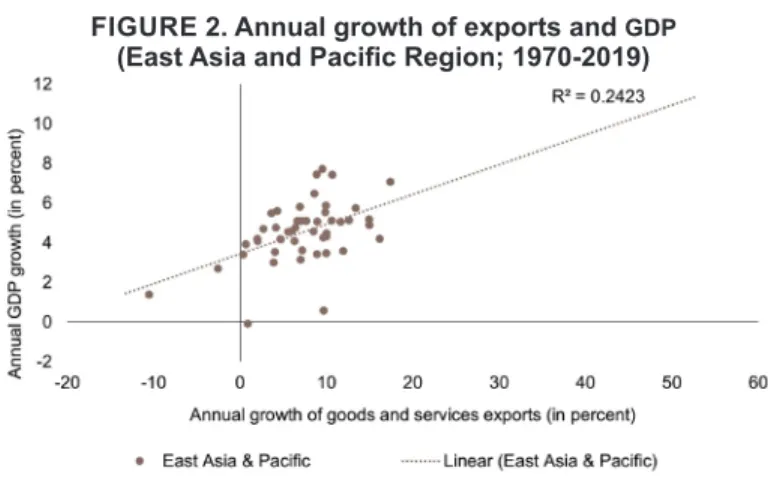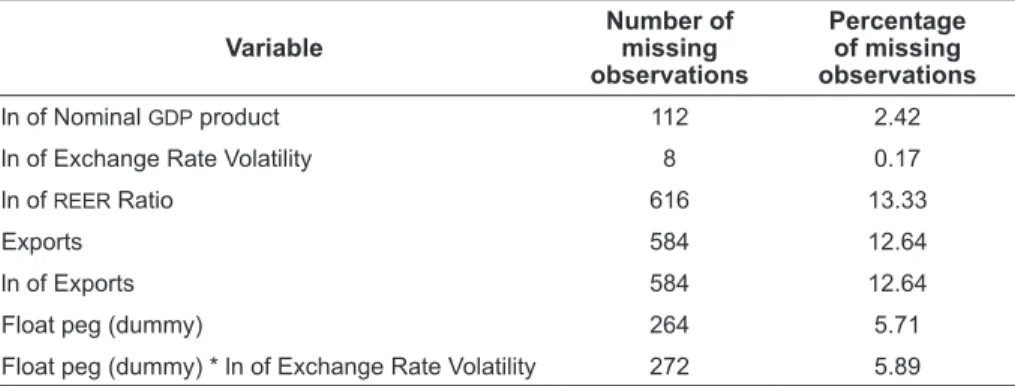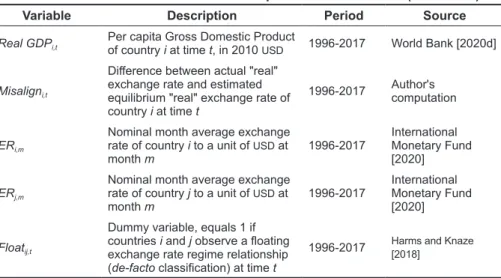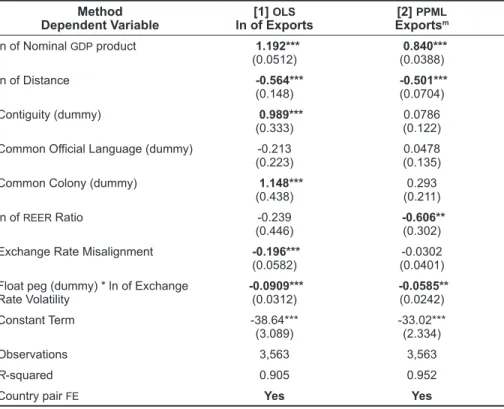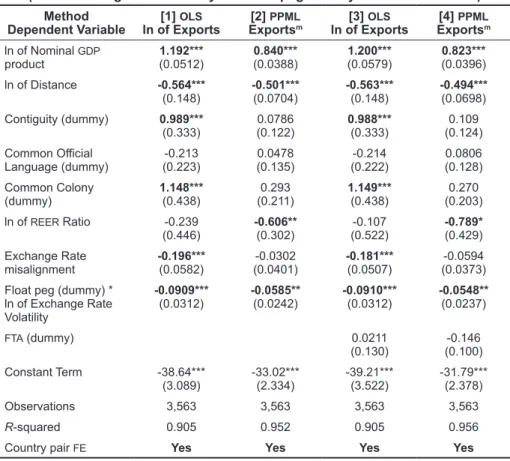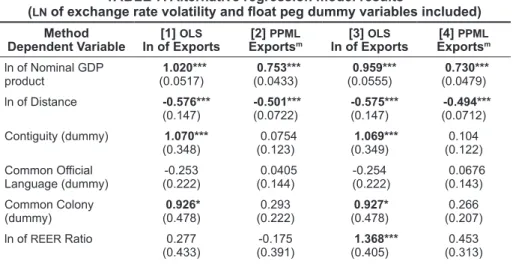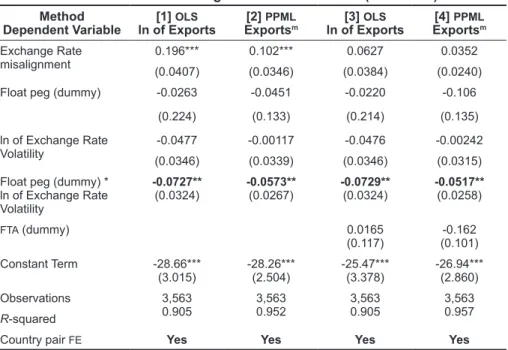Country-pair-time fixed effects model for panel data 178 countries Bilateral trade Volatility of the real exchange rate. Exchange rate volatility has a significant long-term impact on the volume of bilateral exports for most trading partners. Direct link, indirect link and monetary union significantly increase bilateral trade; Exchange rate volatility significantly reduces bilateral trade.
TA*The rate of exchange rate depreciation significantly increases average bilateral trade; Exchange rate volatility and RTA*Exchange. Against this background, exchange rate volatility theoretically affects exports due to its effect on additional costs. Previous empirical studies analyzing the effects of exchange rate volatility on trade have also produced mixed results.
The empirical study by Hayakawa and Kimura [2009] observed that exchange rate volatility significantly reduces a country's bilateral exports. The estimates showed that there is no significant long-run relationship between exchange rate volatility and world exports. Tenreyro's results showed that there is no statistically significant relationship between exchange rate volatility and bilateral trade.
It is important to analyze the effects of exchange rate volatility and other variables on trade within the RCEP region.
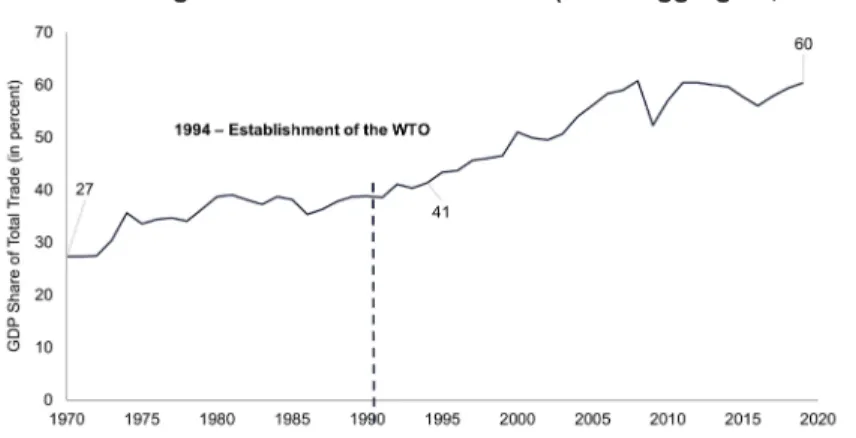
Methodology and data
This demonstrates that multilateral resistance variables can be specified in the PPML estimator by means of exporter and importer dummy variables. Annual ratio of real effective exchange rate index of countries i and j weighted for 171 partner countries, respectively at time t. Dummy variable, is equal to 1 if countries i and j observe a floating exchange rate regime relationship (de-facto classification) at time t.
The percentages of missing observations in the data set are less than those of the missing observations of various empirical studies discussed earlier. Nicita [2013] reported 34.58 percent missing observations in the model that did not include exchange rate volatility and 61.27 percent missing observations in the full model that included exchange rate volatility. The bilateral exchange rate misalignment between country pairs was calculated using a four-step process similar to that of Rodrik [2008] and Nicita [2013].
First, a hypothetical 'real' exchange rate (RER) was obtained by deflating a country's nominal exchange rate into the USD (XRAT) using a country's purchasing power parity conversion factor (PPP), as seen below. An increase in the value of the hypothetical 'real' exchange rate indicates that the domestic currency has depreciated, while an increase in the REER index indicates an appreciation of the domestic currency. Second, given that non-tradable goods are cheaper in poorer countries,314 the hypothetical 'real' exchange rate must be adjusted via the Balassa-Samuelson effect.
This was calculated by regressing the hypothetical 'real' exchange rate with a country's real GDP per capita with time fixed effects. Third, the level of exchange rate deviation was calculated by taking the difference between the actual hypothetical “real” exchange rate and the estimated exchange rate. Misaligni,t = lnRERi,t − lnRERi,t (7) Finally, the bilateral exchange rate deviation per country pair was obtained by the sum of the exchange rate deviations between the two countries.
Misalignij,t = Misaligni,t + Misalignj,t (8) According to Rodrik [2008], a positive level of misalignment indicates an undervalued currency compared to the equilibrium exchange rate. Volatilityij,t = std.dev[ERij,m − ERij,m-1] (10) where ERi,t represents the nominal exchange rate of country i against a USD at time t, ERij,t represents the difference between the nominal exchange rate of country i and country j, ERij,m represents the difference between the monthly average of the nominal exchange rate of both countries in month m, and Volatility represents the standard deviation of the exchange rates for a given year t. The difference between the two countries was adjusted by Nicita [2013] to emphasize the presence of hard exchange rate regimes where ERij,t and Volatilityij,t are both equal to zero.
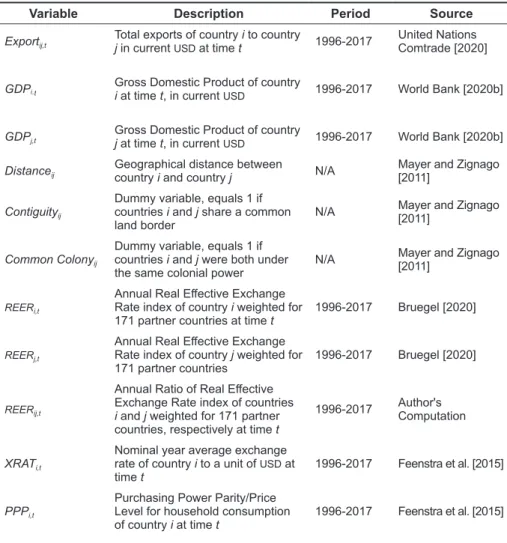
Results and discussion
On the other hand, the natural logarithm of the distance between country pairs, the REER ratio between country pairs, and the natural logarithm of exchange rate volatility for country pairs under a floating peg exchange rate regime significantly reduce a country's exports. The natural log of the REER ratio between country pairs, along with the interaction variable between floating exchange rate regimes and the natural log of exchange rate volatility are both significant at the 5 percent level. However, previous studies have observed that the export-reducing effects of REER and exchange rate volatility are offset and disappear when interacted with the concept of foreign value added (FVA).
A one percent increase in the exchange rate volatility of country pairs under a floating peg exchange rate regime leads, ceteris paribus, to a 0.06 percent decline in a reporting country's exports. The higher the exchange rate volatility for the specified countries, the greater the risk of trading. Evaluating the effects of exchange rate volatility without considering the presence of other monetary variables can yield insignificant results.
Therefore, empirically, an interaction variable between exchange rate volatility and floating exchange rate regimes was used. Additionally, the interaction variable between floating exchange rate regimes and the natural logarithm of exchange rate volatility is significant at the 5 percent level. An alternative regression model was also estimated where exchange rate volatility and floating exchange rate regimes were regressed separately with the interaction term.
Countries under a floating exchange rate regime are affected by the trade-reducing effect of exchange rate volatility. The observed negative effects of exchange rate volatility on exports are consistent with Clark et al. The exchange rate shift variable is also adjusted with the hypothesized sign of the misalignment variable's coefficient, albeit insignificantly.
Data on exports and exchange rate volatility show extreme increases in the years 1997 to 1999 due to the Asian financial crisis. But during the crisis, average annual nominal exchange rate changes were around 35.35 percent. This clearly indicates a high level of exchange rate volatility, as Rana [1998] compared the change in the region with that in the United Kingdom, which reported a nominal exchange rate change of 0.2 percent during the crisis.
As a result, it is also important to determine whether data from the Asian Financial Crisis affect the importance of exchange rate volatility in the model. Results indicate that the interaction of the natural logarithm of exchange rate volatility with a floating exchange rate regime is still significant.
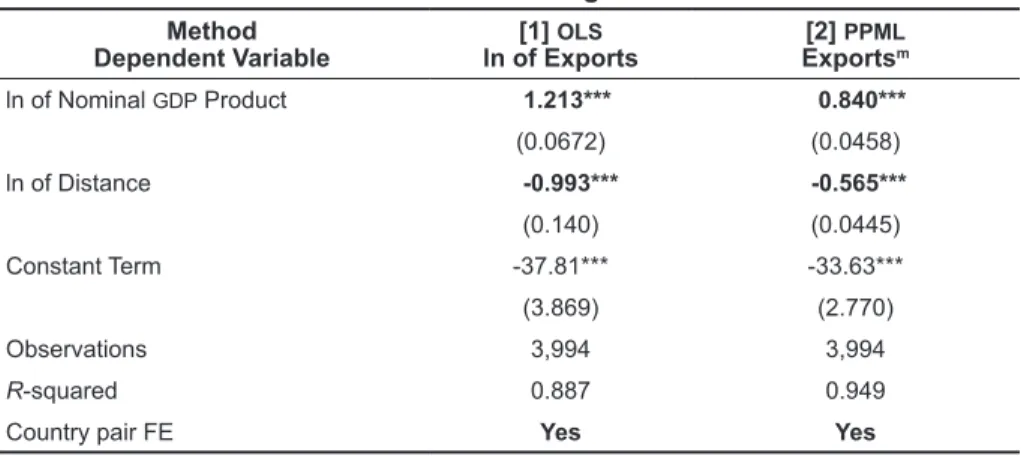
Summary and conclusion
Finally, the significant but minimal effect of exchange rate volatility estimated in the model is consistent with previous literature. Expanding the data set in this way can explore the offsetting effect of AUV on important export-reducing variables such as REER and exchange rate volatility. The effects of exchange rate fluctuations differ for each product, and conducting sector-level analysis allows for a more nuanced study that is not available in aggregate-level analysis.
Hegerty [2009] "The Effects of Exchange Rate Volatility on United States-Mexico Commodity Trade", Southern Economic Journal. Roy [2020] “Effect of Exchange Rate Uncertainty on Bilateral Trade Performance in SAARC Countries: A Gravity Model Analysis”, International Trade, Politics and Development 5(1):32–50. Cheng [2016] “Do Exchange Rate Volatility and Income Affect Australia's Maritime Export Flows to Asia?”, Transport Policy 47(April):13–21.
1998] "Exchange Rate Fluctuations and Trade Flows: Evidence from the European Union", IMF Working Paper No Kimura [2009] "The Effect of Exchange Rate Volatility on International Trade in East Asia", Journal of the Japanese and International Economies. International Monetary Fund [2006] “De facto classification of exchange rate regimes and monetary policy framework”, https://www.imf.org/external/np/.
Hamizah [2009] “Exchange Rate Deviation, Volatility and Import Flows in Malaysia”, International Journal of Economics and Management. 2020] “The Effects of Exchange Rate Volatility on Exports in COMESA: A Gravity Model Approach,” Journal of Applied Finance & Banking. Pontines [2013] “Exchange Rate Policy and Regional Trade Agreements: A Case of Conflicting Interests?” ADBI working paper series no.
2015] "Exchange rate volatility and trade: the case of trade between China and ASEAN countries", http://lup.lub.lu.se/student-papers/. Pérez-Rodríguez [2019] “International Trade, Exchange Rate Regimes, and Financial Crises,” The North American Journal of Economics and Finance 47 (January): 85–95. 2014] “Effects of Exchange Rate Volatility on Merchandise Trade Flows between the US and Thailand”, PhD Dissertation.
